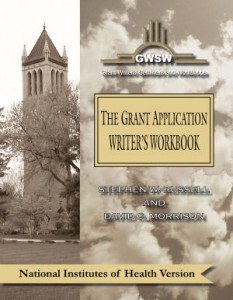Here is a question we recently received from one of our readers:
“Dear Grant Writers’ Seminars & Workshops,
I would like to ask you if you have seen the use of “boxes” to explain methods in detail in the Approach section? I have seen one grant (proposal) doing that, and one of my PIs would like to do it. Her point is, since she is a junior faculty very new in the field, she would like to point out that she knows and has experience in the methods she describes. Attached is one example (size of the font of the box is 8.5). Is this something NIH allows?
Thank you very much and best regards,
Questioning applicant”
GWSW responds:
There are several reasons why your PI should not include boxes like the one that you forwarded to us, even though it would most probably (at least conceptually – but see point #5 below) be “allowed” by the NIH:
1. As a general rule, there are very few things in a grant application likely to be more boring for reviewers than reading lengthy methodology. Thus, this information should be balanced by keeping it to a minimum, while still providing reviewers with sufficient evidence/documentation of the ability of the research team to accomplish the goals outlined in the application (see point #2 below).
2. Most of what is in the box could readily have literally been copied from published journal articles or methods manuals. Further, what is included in the box does not help to inform reviewers whether or not the methods would be feasible in her (or her co-investigator’s) hands. Since you indicate that she “has experience in the methods she describes”, it would be far more convincing to actually include preliminary data or, alternatively, documentation of published works using the methods proposed, which would, of course, negate the relevance of what’s in the box.
3. In the event that the evidence that was discussed above would not be documentable by the P.I and co-investigators, but would still be required to accomplish the work, one possibility would be to acknowledge that fact in the “Potential Problems and Alternative Strategies” section of the “Approach”, and briefly discuss why using such an approach would most likely not present overwhelming problems. Then conclude with evidence in a supporting letter from an individual who has that documented expertise (included in the Appendix to the application), stating that this person would be willing to assist in the “unlikely” event that problems might be encountered. Such an approach should, of course, be used sparingly.
4. Moreover, the methodologic physical space required to provide that level of detail would most likely consume considerable space that could be more appropriately used to describe the more important, conceptual aspects of what she is presenting. That is most likely what would get reviewers excited, not very detailed methodology.
5. Equally important, it is likely that she would either be criticized for trying to get around the page limits or, worse, she could potentially be precluded from submitting the application, because of the 8.5 point size font in the box that you have described. We are reasonably confident that the contents would not be considered a footnote to a table or a figure legend. Rather, it would very likely be considered as bona fide text, even though it is encased in a text box.
The bottom line here is that this approach should probably be discouraged. We do hope that these suggestions have been helpful. Good luck to you and your PI on the planned NIH application.
Best regards,
GWSW

